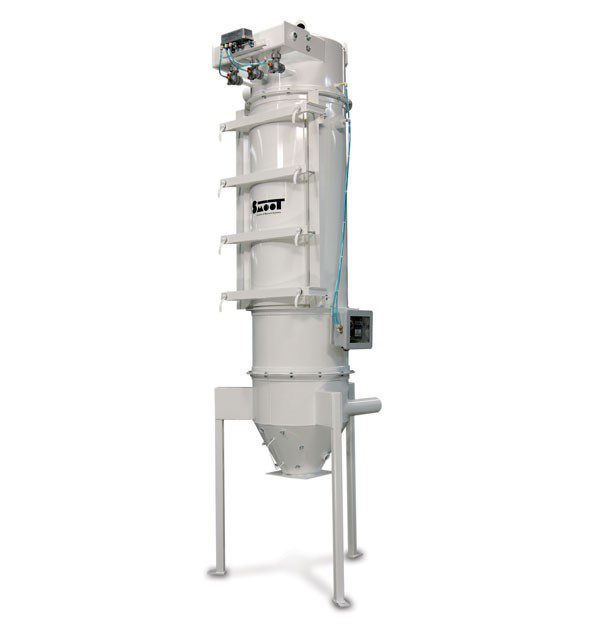

Some days the lines between the dust collection industry and the pneumatic conveying industry become blurred. This is easy to do because a lot of the equipment is the same equipment (pulse jet fabric filters, rotary valves, air movers, yada, yada, yada…and no, I didn’t forget the bisque).
The primary difference between a dust collector and a pneumatic receiver / bin vent is how it’s applied. More specifically, the dust loading of the filter is typically different. Because the object of dust collection is to pick-up very little material and only capture what is nuisance vs. a pneumatic system where the material is present in mass quantities (insert SNL Coneheads joke here) the material loading is much higher, therefore the air-to-cloth ratio must be much higher.
A failure to understand this can cause issues in either direction. If you ask a pneumatic engineer for a quote on a dust collector without giving him all the details, you are likely to come back with a bag house twice as big as needs to be. If you ask a dusty guy to put a bin vent on a silo, you can usually tell when the truck is unloading by the burp of dust out of the PRV.
Recently I helped out a manufacturer of flooring who was wandering why when he converted his cartridge bag house to a bin vent, and mounted it directly to his mixer, his cartridges started plugging even though his air flows were the same and it was the same. The difference was the material loading. While before, the dust collector was only seeing nuisance dust, after conversion, it was seeing much more. This causes the potential for the same filters to now plug up. So while the issue of remote capture and waste was eliminated a new problem was created. To eliminate this, a larger bin vent was needed to serve the same purposes, to reduce the air-to-cloth ratios and interstitial velocities to allow the filter to clean properly.
For more information on Bin Vents and Filter Receivers Click Here.
Related Post
Why Use a Single-Source Systems Integrator Like Magnum Systems?
What Are the Advantages of Dense-Phase Pneumatic Conveying?
Mastering Integration in Manufacturing with Magnum Systems: A Deep Dive Podcast Episode
The Secrets of Valve Bag Sealing: Expert Insights from Magnum Systems